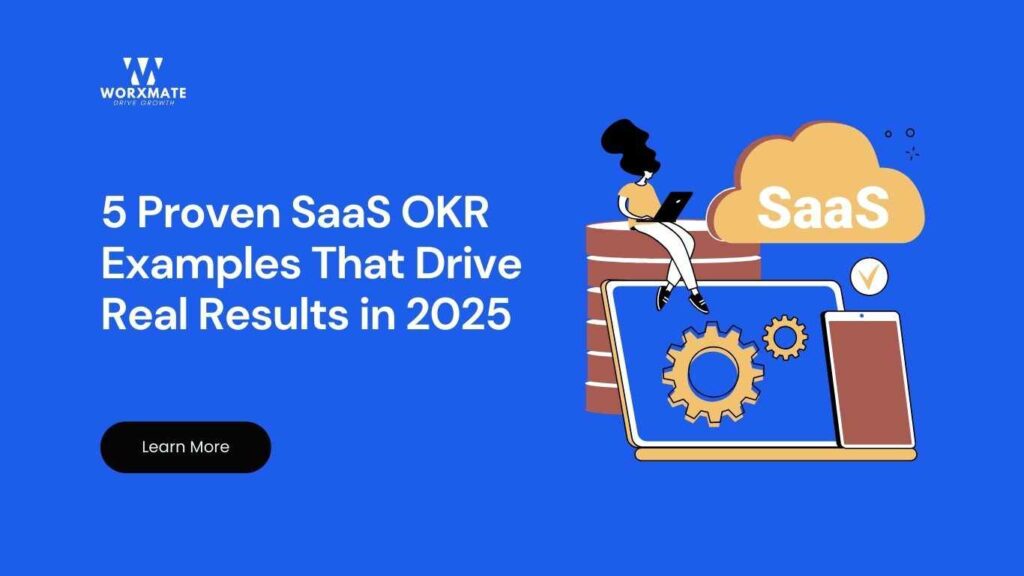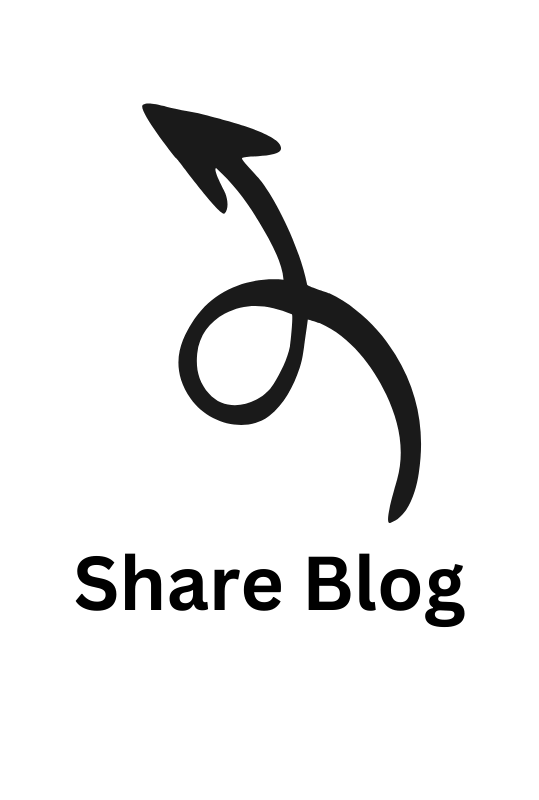In today’s competitive SaaS landscape, alignment is not just beneficial—it’s essential for survival and growth.
As companies scale rapidly and navigate ever-changing market conditions, keeping teams focused on the right priorities can become increasingly challenging.
This is where Objectives and Key Results (OKR) shine as a powerful framework for SaaS companies. By implementing a robust saas okr strategy, organizations can ensure everyone is rowing in the same direction, turning ambitious goals into measurable achievements.
Whether you’re a startup finding your footing or an established player seeking to innovate, OKRs provide the structure needed to transform vision into reality while maintaining the agility that makes SaaS businesses thrive.
What are SaaS OKRs?
OKRs, which stands for Objectives and Key Results, is a goal-setting framework precisely adapted to the needs of SaaS companies. This methodology breaks down big strategic ambitions into achievable chunks, making them more manageable and measurable.
In the SaaS context, an OKR typically follows this structure:
“We shall [objective], as measured by [key result].”
The framework consists of two primary components:
- Objectives: Clear, inspiring goals that provide direction and purpose (e.g., “Improve customer onboarding process”)
- Key Results: Specific, measurable outcomes that indicate progress toward the objective (e.g., “Reduce time-to-value from 14 days to 7 days”)
What makes simple saas okr implementation particularly effective is how it allows organizations to bridge the gap between ambitious visions and day-to-day operations, ensuring everyone understands not just what needs to be done, but why it matters.
Why are OKRs Important for SaaS Companies?
The dynamic nature of the SaaS industry makes OKRs not just helpful, but essential. Here’s why SaaS companies specifically benefit from implementing OKRs:
-
Alignment and Focus
OKRs align teams around common goals, ensuring everyone is working toward the same priorities. In an industry where cross-functional collaboration is crucial, this alignment prevents silos and wasted effort.
-
Adaptability and Agility
The SaaS environment demands quick pivots in response to market changes, competitor movements, and customer feedback. OKRs provide a framework that is rigorous yet flexible enough to adapt when needed.
-
Measurable Progress
SaaS companies thrive on data, and OKRs cater to this by providing clear metrics to track progress. This enables teams to identify what’s working and what’s not, allowing for timely course corrections.
-
Transparency and Accountability
OKRs create transparency across the organization, making goals and progress visible to everyone. This fosters accountability and helps teams understand how their work contributes to broader company objectives.
The SaaS OKR Framework
To implement okr saas effectively, companies need to follow a structured approach that works within their specific business context:
-
Step 1: Examine Business Goals
OKRs must align with organizational goals and drive everyone individually toward the business vision.
-
Step 2: Set Clear Objectives
Define where you want to go next—whether that’s increasing revenue, improving customer experience, driving more traffic, or expanding your user base.
-
Step 3: Define Key Results
Plan specifically how you’ll achieve the objective with concrete, measurable outcomes. For example: “Cross $1 million in sales” or “Achieve NPS over 85”.
-
Step 4: Create Initiatives
Develop action plans to attain the key results, such as hosting webinars for lead generation or implementing new customer service technologies.
-
Step 5: Track and Review Regularly
Monitor progress at regular intervals, celebrating smaller achievements along the way to maintain motivation.
Case Study: OKRs Driving Success in SaaS Companies
According to a 2024 McKinsey study, SaaS companies that implemented a structured OKR framework saw a 25% increase in employee engagement and a 30% improvement in goal achievement rates compared to those using traditional goal-setting methods.
One notable success story comes from Atlassian, which adopted OKRs to align its rapidly growing teams across different products and geographies. By implementing quarterly OKR that cascaded from company-level objectives down to team and individual goals, Atlassian reported:
- 40% reduction in time spent on misaligned initiatives
- 35% improvement in cross-functional collaboration
- 28% increase in feature delivery speed
The Harvard Business Review also highlighted how OKRs helped Buffer, a social media management platform, navigate a challenging pivot in their business model.
By establishing clear objectives tied to new revenue streams and measurable key results around customer adoption, Buffer successfully transitioned while maintaining team morale and focus.
How to Implement OKRs Successfully in Your SaaS Company
Implementing OKRs effectively requires thoughtful planning and execution:
- Start small – Begin with one or two teams before rolling out company-wide
- Keep it simple – Limit objectives to 3-5 per team with 3-5 key results each
- Make objectives inspiring – They should motivate teams to stretch beyond comfort zones
- Ensure key results are measurable – If you can’t measure it, it’s not a good key result
- Review frequently – Weekly check-ins with quarterly resets maintain momentum
The most successful implementations involve leadership commitment, training for all employees, and technology solutions that make tracking progress seamless.
SaaS OKR Examples
Here are some practical saas okr examples for different departments within a SaaS organization:
-
Company-Level OKRs
Objective: Emerge as the #1 digital transformation partner in our market segment
-
- Key Result 1: Survey to identify the ten most in-demand technologies and gather related talent
- Key Result 2: Conduct team audits to identify silos, technology, and manpower gaps
- Key Result 3: Expand business presence to at least 5 more geographical locations
-
Enhance Product Adoption
Objective: Boost user engagement with new features.
-
- KR1: Achieve a 30% adoption rate for the latest feature.
- KR2: Deliver three educational webinars for customers.
- KR3: Increase daily active users by 20%.
-
Sales Team OKRs
Objective: Increase revenue to record levels
-
- Key Result 1: Increase sales by 25% each month
- Key Result 2: Reduce sales cycle from 45 days to 30 days
- Key Result 3: Improve lead-to-customer conversion rate from 2% to 3.5%
-
Customer Success OKRs
Objective: Reduce churn to best in the industry
-
- Key Result 1: Decrease monthly customer churn from 3% to 1.5%
- Key Result 2: Increase customer retention rate by 15%
- Key Result 3: Improve average NPS score from 30 to 45
-
Marketing OKRs
Objective: Generate more qualifying leads
-
- Key Result 1: Attain 100 MQLs from paid ads
- Key Result 2: Gather 50 MQLs from organic traffic
- Key Result 3: Gather 100 MQLs from email marketing
- Key Result 4: Invest 35% more in Account Based Marketing
How Worxmate Helps SaaS Companies Implement OKRs
Implementing and tracking OKRs becomes significantly easier with the right tools. Worxmate’s comprehensive OKR Tracking Software offers a purpose-built solution for SaaS companies looking to maximize alignment and results.
Worxmate enables your teams to:
- Create and cascade objectives throughout the organization
- Track progress in real-time with intuitive dashboards
- Connect individual contributions to company goals
- Conduct effective check-ins and performance reviews
- Generate insights to optimize goal-setting over time
With Worxmate, your SaaS company can transform OKRs from a theoretical framework to a practical, daily driver of success.
The platform’s user-friendly interface ensures high adoption rates, while powerful analytics help leadership make data-driven decisions.
Ready to align your teams and accelerate growth? Try Worxmate today and see how our OKR Software can transform your goal-setting process.



